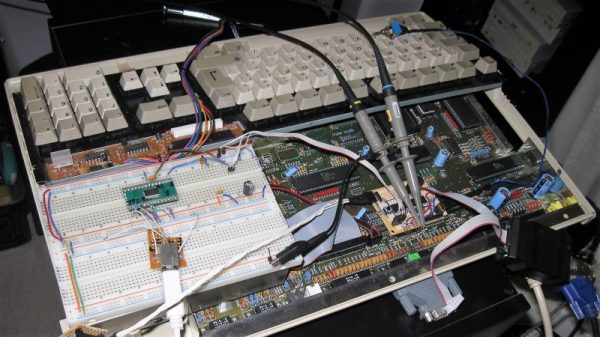The best projects always seem to come from eBay. A few weeks ago, we found a few tiles meant for gigantic LED panel installations, and fifty bucks got you ten tiles. That eBay auction is now sold out. A while ago, [Just4Fun] realized he could build a Z80 microcomputer with $4 worth of parts from everyone’s favorite online auction house. The result is a $4 Z80 home computer, and a great Hackaday Prize entry to boot.
So, what do he need to build a retrocomputer loaded up with Forth, CP/M, and Basic? A CPU is a necessity, and [Just4Fun] found a Z80 (technically a Z84C00) for just a bit more than a dollar. A computer will need some RAM too, and a 128 kiB parallel SRAM was just the ticket for another dollar.
Here’s where things get a bit more interesting. Where the retrocomputers of yore were loaded up with glue logic, PLAs, or other weird chips, modern technology has come a long way. Instead of a massive amount of glue, [Just4Fun] is using an ATmega32A for all the I/O, address decoding, and a serial terminal.
The ATmega thrown into this cornucopia of vintage chips is itself more than a decade old, but it does have 40 pins and 32 kiB of Flash. That’s enough to ‘virtualize’ all the peripherals you’d need on a Z80 bus and provide the clock signal for the rest of the computer.
This home computer was originally designed and laid out on a solderless breadboard, but [WestfW] managed to stuff this all onto a small PCB. That’s a cheap computer that gets you all the retrocomputing goodies, and it’s something that’s just random enough to be a perfect entry for the Anything Goes portion of the Hackaday Prize.





















